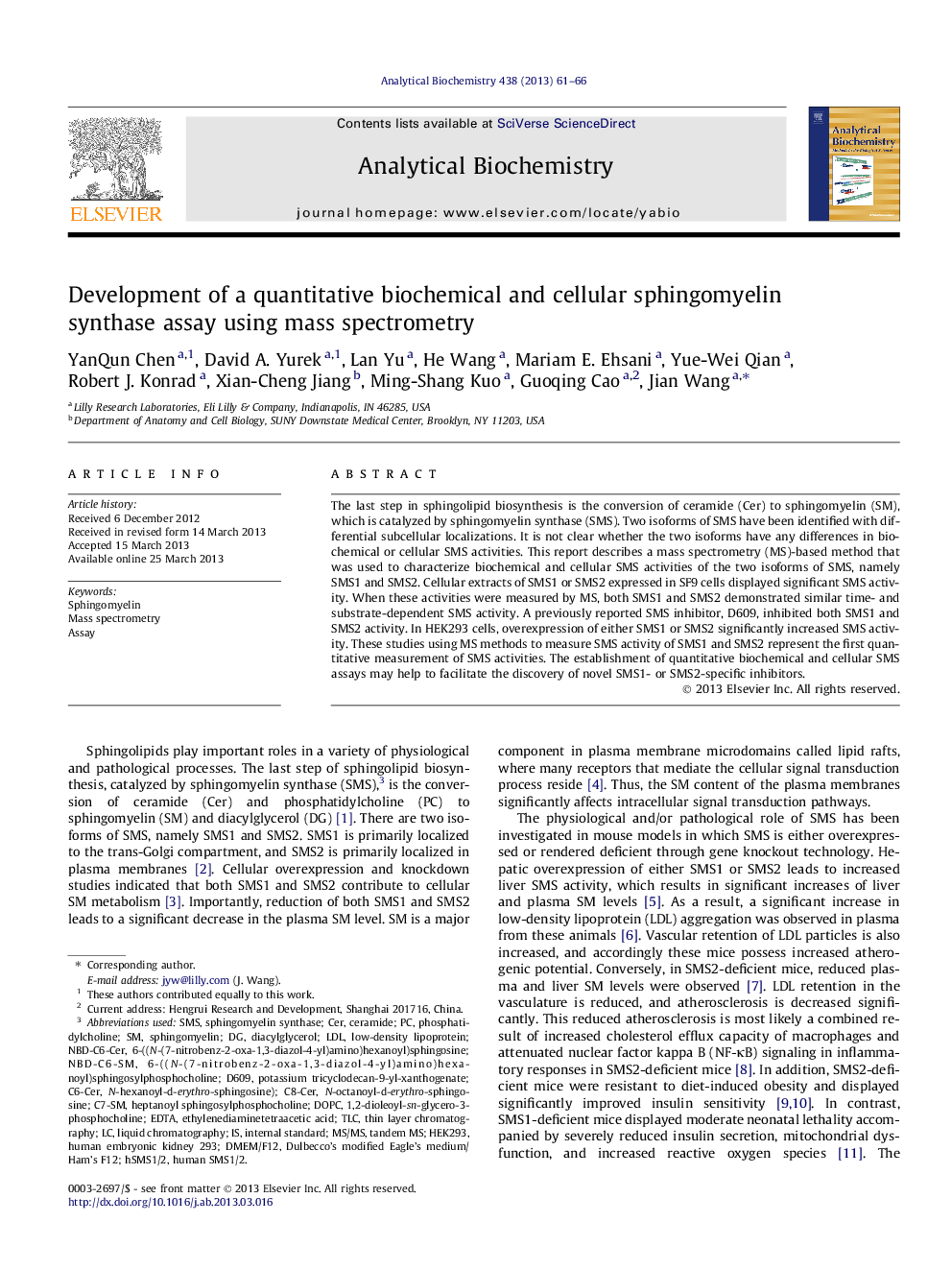| Article ID | Journal | Published Year | Pages | File Type |
|---|---|---|---|---|
| 1172844 | Analytical Biochemistry | 2013 | 6 Pages |
The last step in sphingolipid biosynthesis is the conversion of ceramide (Cer) to sphingomyelin (SM), which is catalyzed by sphingomyelin synthase (SMS). Two isoforms of SMS have been identified with differential subcellular localizations. It is not clear whether the two isoforms have any differences in biochemical or cellular SMS activities. This report describes a mass spectrometry (MS)-based method that was used to characterize biochemical and cellular SMS activities of the two isoforms of SMS, namely SMS1 and SMS2. Cellular extracts of SMS1 or SMS2 expressed in SF9 cells displayed significant SMS activity. When these activities were measured by MS, both SMS1 and SMS2 demonstrated similar time- and substrate-dependent SMS activity. A previously reported SMS inhibitor, D609, inhibited both SMS1 and SMS2 activity. In HEK293 cells, overexpression of either SMS1 or SMS2 significantly increased SMS activity. These studies using MS methods to measure SMS activity of SMS1 and SMS2 represent the first quantitative measurement of SMS activities. The establishment of quantitative biochemical and cellular SMS assays may help to facilitate the discovery of novel SMS1- or SMS2-specific inhibitors.
